Only 3% of designers across all disciplines are Black in spite of Black folks being 12% of the population in the United States. Black designers have faced structural exclusion from the industry, resulting in experiences of isolation. Yet, Black designers are manifesting their own community and opening doors for Black creatives, as evidenced by the success of the Black Artists + Designers Guild (BADG), which recently celebrated its fifth anniversary.
Over the past five years, the organization has grown to 125 members representing a wide range of interior, landscape, product, textile, and craft artists and designers. It has raised $2 million dollars in donations and sponsorships, and its members have racked up accolades as leaders in the design industry.
Its Obsidian Virtual Conceptual House project won the 2022 ASID Design Innovation Award and AZURE’s Best of 2021. In 2022, BADG was included in the Library of Congress, and its “Futures Facing” mural was showcased on 375 billboards nationally in collaboration with Lamar Advertising and Colossal Media. The organization has partnered with S. Harris and Pottery Barn in licensing deals for special BADG collections. And yet, to speak with founding members of BADG, the organization’s true success has been the nurturing of a community of belonging for Black designers, who often experience isolation and exclusion in the overwhelming whiteness of the design industry.

Everick Brown, Leyden Lewis, Beth Diana Smith, Cheryl R Riley, Jomo Tariku, Malene Barnett, Rayman Boozer. [Photo: Sophia Chambers/courtesy Black Artists + Designers Guild]

Obsidian by BADG. [Image: courtesy Black Artists + Designers Guild]
Congratulations on your fifth anniversary! Fast Company first featured members of BADG in June 2020, in an article on seven Black interior designers to know. I only came to know BADG when I received your 2022 BADG of Honor Award for Design Education. Since its origins in 2018, what needs has BADG filled in the design industry over the past five years?
Everick Brown: Let’s start with creating a support network. Not only is it a network of what we now call makers—specifically architects, designers, and creatives—but it also has become a home where we support each other.
Beth Diane Smith: I’ll call it a sanity check. Especially once the pandemic hit, we started these very consistent Tuesday night calls. And it just became a check-in, not only about how your business was doing, but also how you were doing during that time.
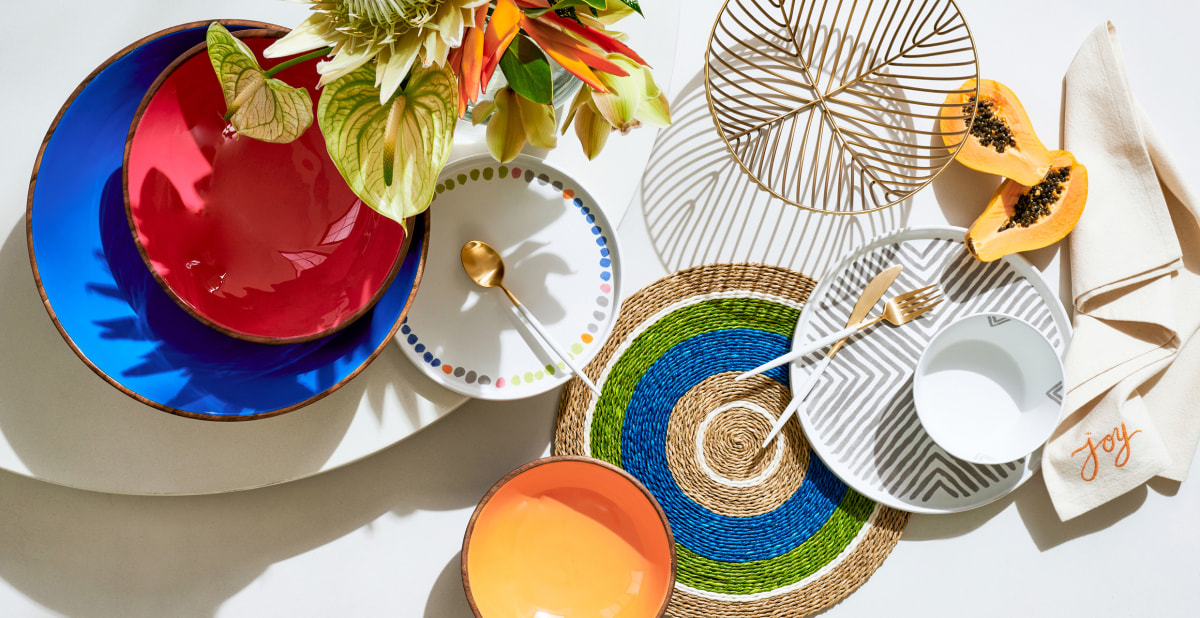
BADG Black Joy Collection for Pottery Barn. [Photo: Kelly Marshall (BADG Member)/courtesy Black Artists + Designers Guild]
Jomo Tariku: I think BADG also presented networking and collaboration projects. I’ve been fortunate enough to work with a few Guild members and many interesting projects. That never happened when I was by myself. So [it’s meant] becoming part of a family who actually do things, share, and exchange ideas. If I miss one of those Tuesday meetings, I really feel that I missed out on a family dinner and look forward to the next one.
Leyden Lewis: When I think of the need, I can only see it in retrospect in a lot of ways that I have been absolutely isolated. And I keep on using that word over and over. The kind of storyline that I had in my head was that “it was all on me” and “why isn’t this happening”? or, “how does this happen for this other design professional”? And finally, when I got together with my BADG brothers and sisters, it was a conversation of like, “oh yeah, that’s going on with me, too.” I think that it’s these shared experiences of isolation that was able to break me out of a shell. My need was to not feel alone.

Djembe Room by Revamp Interior Design featuring Legacy Wall by Malene Barnett. [Photo: courtesy Black Artists + Designers Guild]
Malene Barnett: It’s so interesting listening to everyone as the founder because I thought the need was for us to come together, which it still is, and work collaboratively to create our own space creatively to figure out what it is we wanted to do. Being a Black person in design and making whatever product or spaces, I realized we needed mental nurturing. We needed to feel empowered again. We’re all Black. We’re all entrepreneurs. We’re all creatives of some sort, and we’re all trying to grow, but we all felt that we’re still stuck in a ditch—this ditch that we’ve been trying to climb out for years—and we’ve been trying to climb it on our own. And the group really was a catalyst for us to get out of that ditch and get on top. I feel like now we’re all on top of the mountain. We’re all looking at it from different perspectives, which is beautiful.
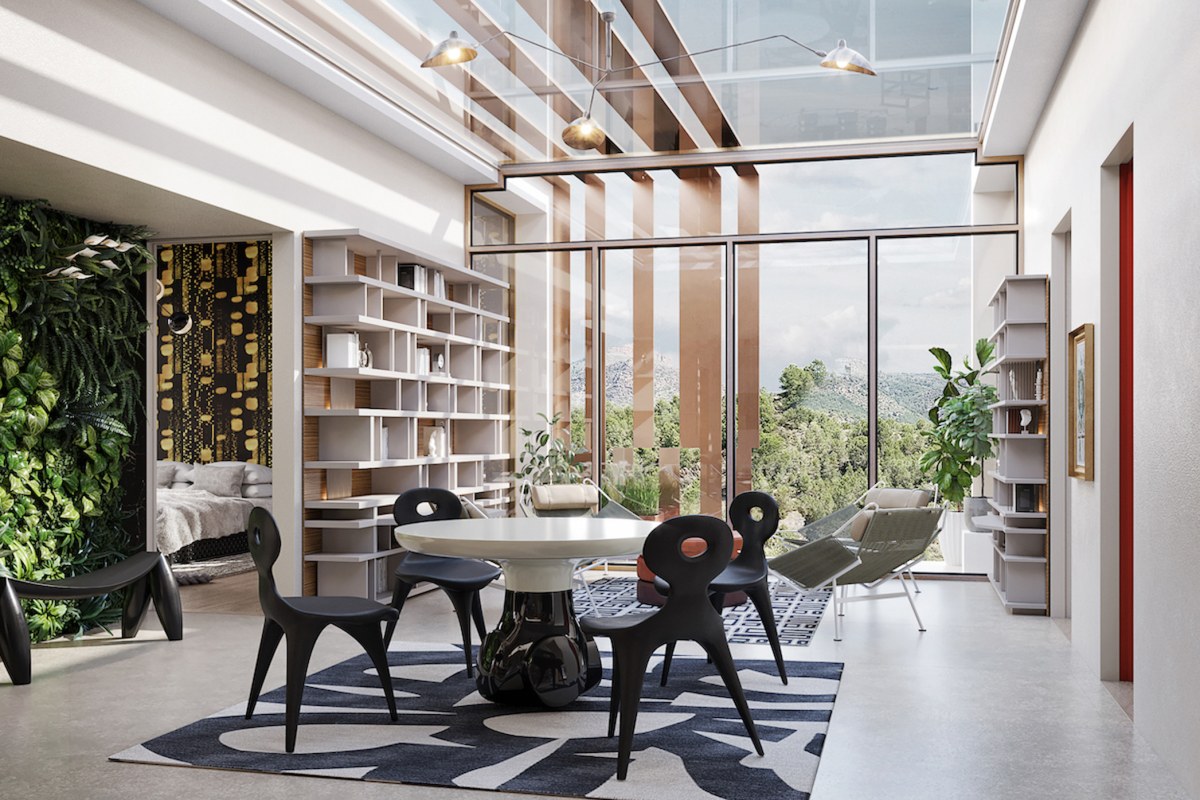
Analog Vestibule by Everick Brown Design. [Image: courtesy Black Artists + Designers Guild]
Brown: One of the things that I love about what this organization has done is how expressive the men are in BADG. Go to a million organizations and let me hear men express themselves the way Leyden [Lewis] and Jomo [Tariku] have. This organization has created a safe place for us to not only express ourselves, but to grow.
Let me step back a question. Because there is something that is being unsaid. What was/is the source of the isolation? Why were we in a ditch?
Lewis: Rabid white supremacism. That’s it. It infects virally throughout the world and in our consciousness, our minds, and our spirit.
Barnett: Ding, ding, ding, ding, ding.
Brown: And I was going to give the soft launch, which was, it was the pandemic. [laughter]
Barnett: It is a situation that is no fault of our own. We are in an industry surrounded by people with unearned financial security, unearned recognition, and unearned opportunities. There’s a starting line and you’re not starting in the same position as your colleagues. And it is not just a little head start, but we’re talking generations of a head start. There’s no way in our lifetime that we will catch up, not unless some huge drastic change happens. We all know that our ancestors brought us this far, and look at how the gap hasn’t closed that much. This is the reality. BADG is helping us to navigate the reality, but to also not allow it to stifle what we want to do with our lives, our creative businesses, and our desires.

BADG Orejen Collection for S. Harris. [Photo: courtesy Black Artists + Designers Guild]
Thank you for stating the unsaid. What has BADG accomplished in the last five years? And then, what does success look like for the organization? This is the part where you big up yourself.
Lewis: I think there’s two ways in which to measure that, right? There’s BADG as an organization that has done incredibly with all of its different programs, whether it be BADG Lifestyle, BADG Lab, or BADG Education. And as a result of participating in those events, we, as individuals, have benefited.
Barnett: Speaking to Leyden’s [Lewis] point, I look at BADG and what we’ve been so successful at is being the magnet. I wanted us to be that magnet in a sense that if you come to us, you know that you’re serious. We have created a foundation for the organization and the members to grow. I know a lot of the members don’t know this, but I was constantly behind the scenes with our team fielding opportunities. And I was being very discerning and very protective of my family. I always had to go back to: “Does this fulfill our mission”? It’s not always the financial—granted we want that, right? But we cannot focus our entire lives off measuring everything by our financial successes, because that’s where the white supremacist ways of thinking come into play. And that is not how we, as a family, have been bred and born. That’s not how we roll.
Brown: I think one of the most inspirational things you’ve done besides starting this organization, Malene [Barnett], is really challenging everybody in this organization to step up as a leader. The other thing that is unique about this organization is that it’s a real collective driven by a team, not just one person.
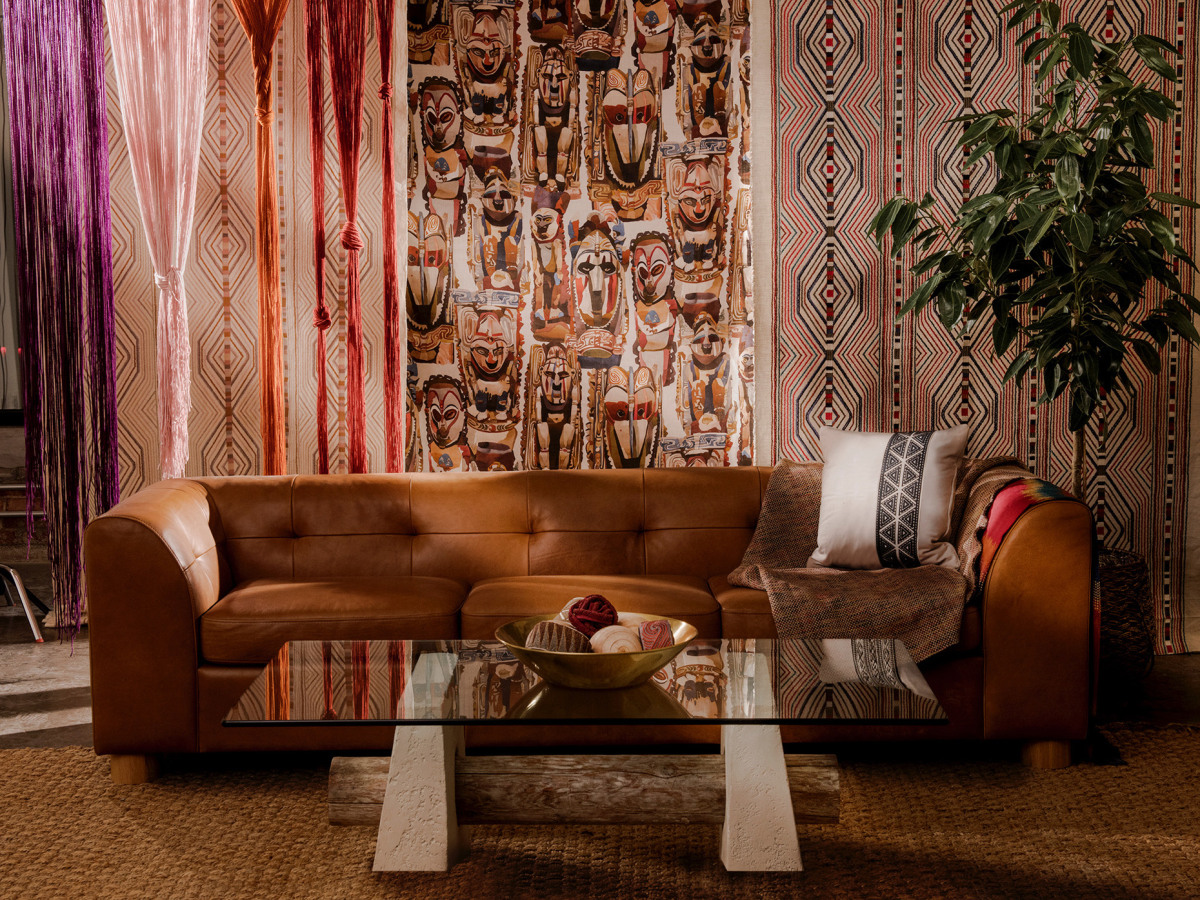
BADG Orejen Collection for S. Harris. [Photo: courtesy Black Artists + Designers Guild]
So then for all of you, there is a sense of collective success, which has been collaborative and curated. What do you see as a professional or personal success that’s come out of the association with BADG?
Smith: I used to be in finance and accounting. I went back to school for my Bachelor’s in Interior Design this past January. I am 99% sure that, if I hadn’t seen Malene [Barnett] do it and juggle everything, I wouldn’t have taken that step, but I’m glad that I did it.
Lewis: I was so cut off that I needed mentorship on how to relate to that thing that’s not being spoken about [white supremacy culture in design] and how do we navigate that world. And I was like, oh, let me just sit back and see how people [in BADG] have conversations with that monolith. And how they negotiate, talk, discuss, and create opportunity. I kind of needed it as an education in behavior.
Brown: It really is about staying relevant. When you first said it, Leyden [Lewis], it made me think it’s reverse mentorship that we need. When I think about the success in this organization, I think about Jomo [Tariku] when you were talking about the Met. Malene [Barnett] didn’t just go get a graduate degree. She’s a Fulbright scholar. It doesn’t end. You can name the names of what people are doing. This group is amazingly inspirational.
Tariku: I just want to mention that I grew up in a culture, Ethiopian, in which shyness is pretty much imposed on you. The way my parents and family members said it, “If you’re good at something, let your work speak for yourself. You don’t say anything.” Well, that doesn’t work in America, so I had to escape that. And just by observing what everybody has been doing in this group is how I became an advocate not only for myself, but for other Black designers as well. I’m not ashamed of it or abashed about it anymore.
Barnett: I want to add on what Jomo [Tariku] is saying. I think about how, as Black people, we are conditioned to understand what migration means. That we’re a people that has to constantly be in motion. And that when we get an opportunity, one of us, we know we have to open the door to bring the family through. I think about my parents, who both immigrated from the Caribbean. My grandmother came, she left her children. And when she got in a good space, she brought her children over. And that’s the same concept like with BADG. This industry has such a tight hold on the door and has only allowed a few of us through at a time. That’s why BADG was about showing that all of us could walk through that door together.

Royal Suite by Shakoor Interiors featuring custom bed by Jomo Tariku. [Photo: courtesy Black Artists + Designers Guild]
My final question is what is one change that you personally would like to see in the design industry to make it a more accountable space for Black creatives?
Smith: I feel like my want is very simple. I just don’t want to hear any more excuses. I don’t want to hear that you don’t know any Black designers. I just want to see action. I want to see accountability. I want to see growth.
Lewis: I would like us to own more of the industry. I would like us to own those publication companies so that we are no longer in the conversation about what they did not do for us. We can be owning more galleries. We could be owning more furniture shops. We can be the people who start to become the key holders.
Brown: Yeah, I’d love that, and I was going to say the same thing. As we call upon change in the industry or we hope for change in the industry, I hope it comes from us doing exactly what we do, working with each other and creating these licensees. Out of this may come a Black-owned design magazine and an appliance company, but that’s really what I look forward to.
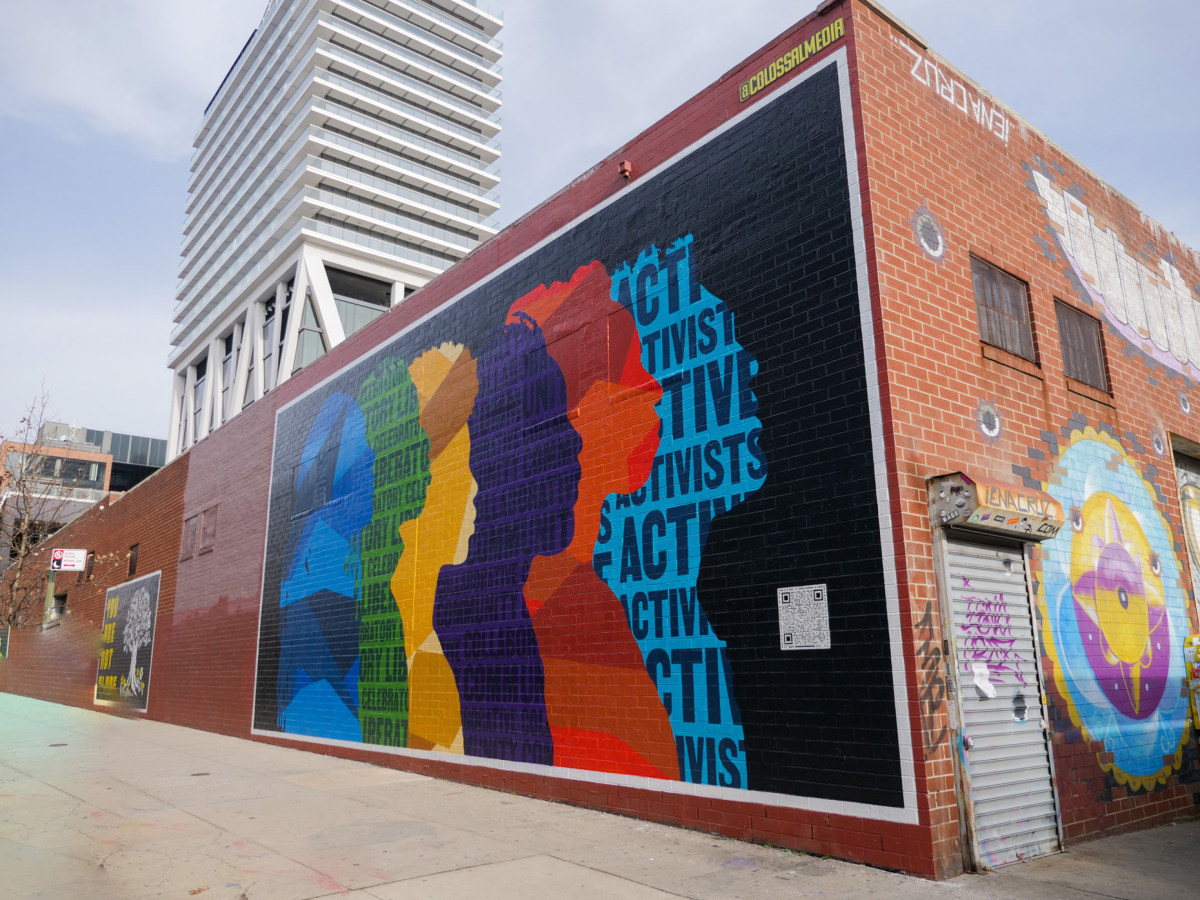
Futures Facing mural. [Photo: Sophia Chambers/courtesy Black Artists + Designers Guild]
Tariku: Just to continue on what Everick [Brown] said, it is about diversification. The ultimate goal, to be honest with you, is to open my own shop where I get to control furniture production myself, where I get to experiment. But I’ve been trying to build my own shop for the last three years. It hasn’t happened, but I’m going to keep working on it even if it takes another three years.
Barnett: One, I want them to stop questioning BADG and just support us financially without questioning why, how, and what. Just write the checks. Two, I want them to stop calling Black designers, creatives, to be a part of their events, showhouses, and then expect us to pay all kinds of money and then wonder why we don’t participate. These are the type of things in which radical financial investment in us has to happen to make it accessible. Just write us the checks. Let us decide how we want to spend it.



.png#keepProtocol)


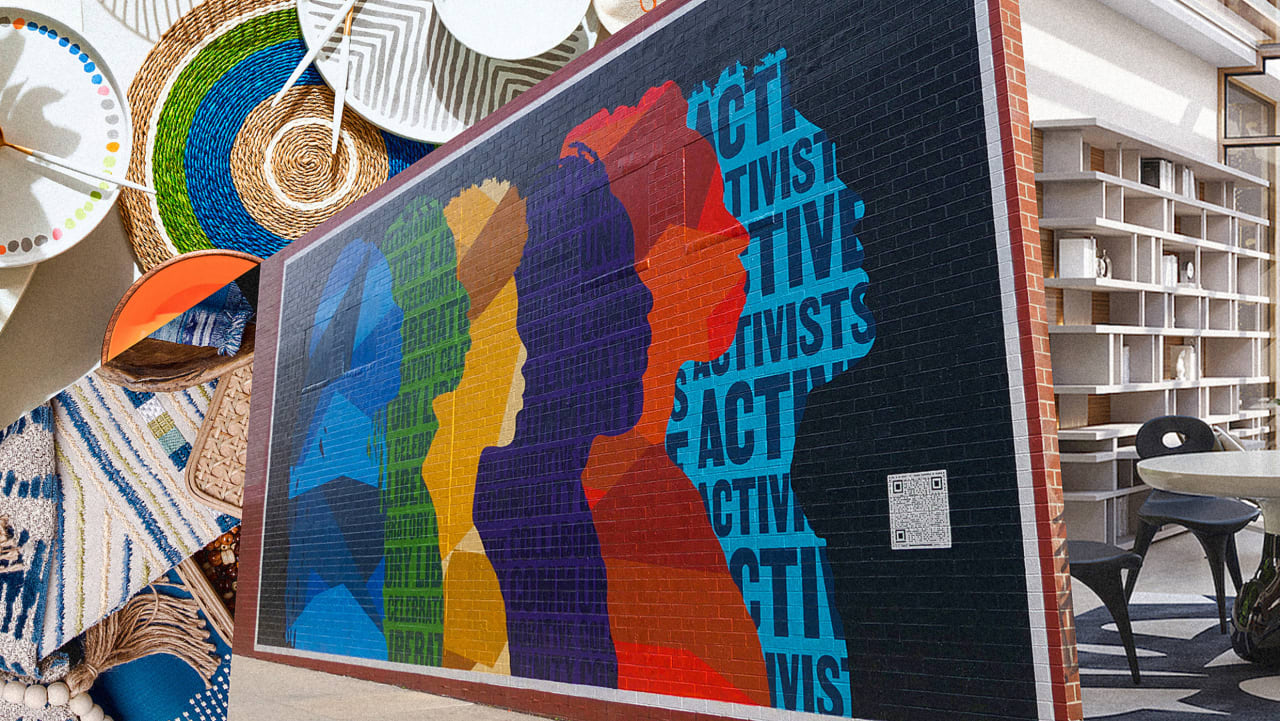

.png#keepProtocol)
More Stories
Level Up Your Career With These 7 Professional Development Tips
Donald Trump Gets a Solution to His Cash Problem
Crypto Exchange Gemini To Refund $1.1B To Earn Program Customers